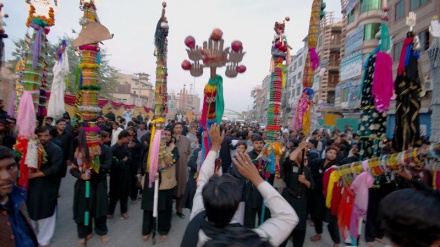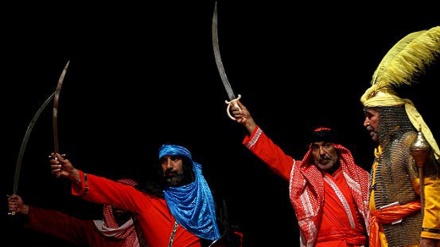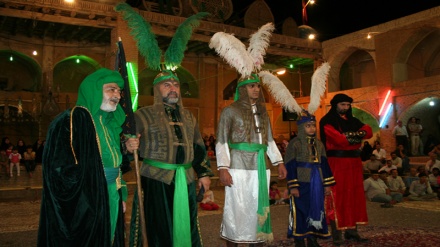Muharram mourning traditions in different lands - 28
Welcome to the 28th part of the 40-plus episodes of a new and interesting series titled “Muharram Mourning Traditions in Different Lands” that we started broadcasting as of October 15 on a daily basis, to commemorate the heartrending tragedy of Karbala, and the martyrdom of Imam Husain (PBUH), the grandson of Prophet Mohammad (Blessings of God upon him and his progeny).
In this series, which delves into the various mourning traditions associated with the Immortal Epic of Ashura in various lands, we look at the history of mourning for Imam Husain (PBUH). From today onwards, we be focusing on the traditional mourning ceremonies in the different cities of Iran for the Martyr of Karbala.
Beating one’s chest (Sineh Zani) is one of the most common forms of mourning for the martyrs of Karbala (Peace be upon them). This activity is almost always carried out in conjunction with recital of mournful elegies (Nowheh Khani in Persian). The person who beats his chest, known as “Sineh Zan”, must do so in rhythmic manner, and in lock step (or in rhythm) with all the others who are also beating their chests (other Sineh Zans). Groups of people beating their chests rhythmically, in tune with mournful songs, can be seen in all villages, towns and cities throughout Iran in the month of Muharram. In mosques and Husseiniyehs, those who beat their chests often form circles, or they stand in rows, and move in a particular way in step with the mournful elegies of the reciter (Nowheh Khan in Persian). In some parts of Iran particular styles of chest beating have become a tradition over the many centuries. We shall now look into different styles of chest beating in various localities in Iran.
In the town of Ramiyan in Northern Iran, a particular style of chest beating prevails, known as “waist-to-waist”. The mourning and chest beating ceremony takes place symbolically, every Muharram, round the Imam Ali Square – one of the main Squares – in the town of Ramiyan. On the day of Ashura, different groups of mourners, march their way from the Central Square of the town of Ramiyan to Imam Ali Square, and when they get there, waist-to-waist chest beating starts. The mourners wear white and green grave-cloths or shrouds, signifying martyrdom of Imam Hussein and the martyrs of Karbala.
There is also a ceremony where a standard bearer symbolically takes a banner of flag round the mourners, who beat their chests. This commemorates the Standard- Bearer of Karbala, Hazrat Abu’l-Fazl al-Abbas (AS), the brother of Imam Husain (AS). Also the use of a white horse in this ceremony signifies “Zu’l-Janah”, the white horse of Imam Husain (AS) in Karbala.
Male and female mourners take part in separate mourning ceremonies in separate rooms, learned speakers are invited to talk and lecture to the mourners, and often tea and sweets are served to those who have gathered. There is also a tradition in Iran where in some homes women-only (all female) mourning ceremonies are held to commemorate the martyrdom of Imam Husain (AS) and the martyrs of Karbala. One of the advantages of holding such a mourning ceremony in your own home is that the children become acquainted with Islam and the epic of Ashura, from an early age, and their religious upbringing will stand them in good stead, later on in their lives.
MD/AS/ME


